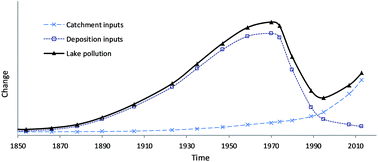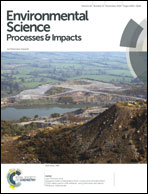Use of the mercury record in Red Tarn sediments to reveal air pollution history and the implications of catchment erosion
Abstract
Red Tarn is a cirque lake with a small ratio of terrestrial area to lake area, surrounded by glacial edges with little soil in the catchment. A sediment core taken from the deepest area of the lake was 210Pb dated and validated by 137Cs and 241Am stratigraphic records. The core was analysed for mercury (Hg) and other elements. The results show Hg pollution before the mid-19th century, and thereafter, a rapid increase in Hg pollution into modern time, followed by a decline in pollution since 1968–1970. This agrees well with the decline in UK Hg emissions since the Clear Air Act of 1968. The results suggest that the core has recorded Hg air pollution history, and it can be used to benchmark Hg changes in the sediments from other lakes in the region up to the late 1980s. However, increased 210Pb fluxes after the late 1980s indicate enhanced catchment erosion, which has brought more legacy Hg in the catchment into the lake. As a consequence, since 2000, the Hg in the sediment record no longer reflects the atmospheric Hg deposition. The core shows how dominant Hg sources for the lake changed from atmospheric deposition to the catchment inputs, and demonstrates that contaminated catchment inputs have not only increased Hg fluxes to the lake sediments but have also increased Hg concentrations in the sediments.


 Please wait while we load your content...
Please wait while we load your content...